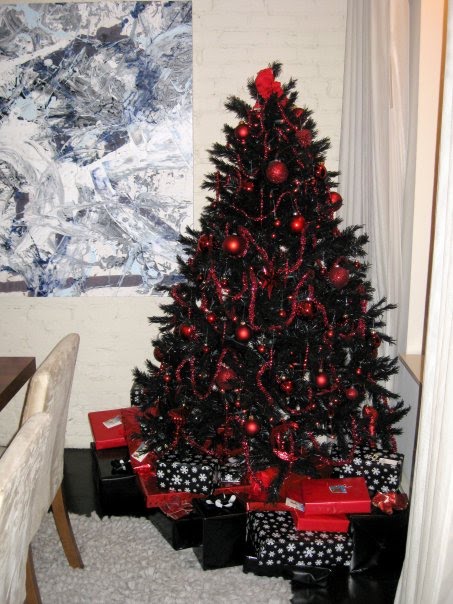One of the many great things about New York City is that we get the biggest and most watched New Year's Eve celebration. In preparation (2010 is only mere days away!) I figured I'd take you through the history of our famous event.
History of the Times Square New Year's Eve and the Infamous Ball
New York in 1904 was a city on the verge of tremendous changes - and, not surprisingly, many of those changes had their genesis in the bustling energy and thronged streets of Times Square. Two innovations that would completely transform the Crossroads of the World debuted in 1904: the opening of the city's first subway line, and the first-ever celebration of New Year's Eve in Times Square. This inaugural bash commemorated the official opening of the new headquarters of The New York Times. The impressive Times Tower, marooned on a tiny triangle of land at the intersection of 7th Avenue, Broadway and 42nd Street, was at the time Manhattan's second-tallest building -- the tallest if measured from the bottom of its three massive sub-basements, built to handle the heavy weight demands of The Times' up-to-date printing equipment.
The building was the focus of an unprecedented New Year's Eve celebration. Ochs spared no expense to ensure a party for the ages. An all-day street festival culminated in a fireworks display set off from the base of the tower, and at midnight the joyful sound of cheering, rattles and noisemakers from the over 200,000 attendees could be heard, it was said, from as far away as Croton-on-Hudson, thirty miles north along the Hudson River.
Two years later, the city banned the fireworks display - but Ochs was undaunted. He arranged to have a large, illuminated seven-hundred-pound iron and wood ball lowered from the tower flagpole precisely at midnight to signal the end of 1907 and the beginning of 1908.
In 1914, The New York Times outgrew Times Tower and relocated to 229 West 43rd Street. By then, New Year's Eve in Times Square was already a permanent part of our cultural fabric.
New Year's Eve Ball, 1978. Photo credit - The New York Times
The first balls:
The first New Year's Eve Ball, made of iron and wood and adorned with one hundred 25-watt light bulbs, was 5 feet in diameter and weighed 700 pounds. It was built by a young immigrant metalworker named Jacob Starr, and for most of the twentieth century the company he founded, sign maker Artkraft Strauss, was responsible for lowering the ball.
As part of the 1907-1908 festivities, waiters in the fabled "lobster palaces" and other deluxe eateries in hotels surrounding Times Square were supplied with battery-powered top hats emblazoned with the numbers "1908" fashioned of tiny light bulbs. At the stroke of midnight, they all "flipped their lids" and the year on their foreheads lit up in conjunction with the numbers "1908" on the parapet of the Times Tower lighting up to signal the arrival of the new year.
The Ball has been lowered every year since 1907, with the exceptions of 1942 and 1943, when the ceremony was suspended due to the wartime "dimout" of lights in New York City. Nevertheless, the crowds still gathered in Times Square in those years and greeted the New Year with a minute of silence followed by the ringing of chimes from sound trucks parked at the base of the tower - a harkening-back to the earlier celebrations at Trinity Church, where crowds would gather to "ring out the old, ring in the new."
In 1920, a 400 pound ball made entirely of wrought iron replaced the original. In 1955, the iron ball was replaced with an aluminum ball weighing a mere 200 pounds. This aluminum Ball remained unchanged until the 1980s, when red light bulbs and the addition of a green stem converted the Ball into an apple for the "I Love New York" marketing campaign from 1981 until 1988. After seven years, the traditional glowing white Ball with white light bulbs and without the green stem returned to brightly light the sky above Times Square. In 1995, the Ball was upgraded with aluminum skin, rhinestones, strobes, and computer controls, but the aluminum ball was lowered for the last time in 1998.
The 2000-2007 Waterford Crystal ball
The Times Square New Year's Eve Ball 2000-2007
For Times Square 2000, the millennium celebration at the Crossroads of the World, the New Year's Eve Ball was completely redesigned by Waterford Crystal. The new crystal Ball combined the latest in technology with the most traditional of materials, reminding us of our past as we gazed into the future and the beginning of a new millennium.
The Ball was a geodesic sphere, six feet in diameter, and weighed approximately 1,070 pounds. It was covered with a total of 504 Waterford crystal triangles that varied in size and ranged in length from 4.75 inches to 5.75 inches per side.
The new LED crystal ball
The New New Year's Eve Ball
The new Times Square New Year’s Eve Ball is a 12 foot geodesic sphere, double the size of previous Balls, and weighs 11,875 pounds. Covered in 2,668 Waterford Crystals and powered by 32,256 Philips Luxeon Rebel LEDS, the new Ball is capable of creating a palette of more than 16 million vibrant colors and billions of patterns producing a spectacular kaleidoscope effect atop One Times Square.
Each year, hundreds of thousands of people still gather around the Tower, now known as One Times Square, and wait for hours in the cold of a New York winter for the famous Ball-lowering ceremony. Thanks to satellite technology, a worldwide audience estimated at over one billion people watches the ceremony each year. The lowering of the Ball has become the world's symbolic welcome to the New Year.













